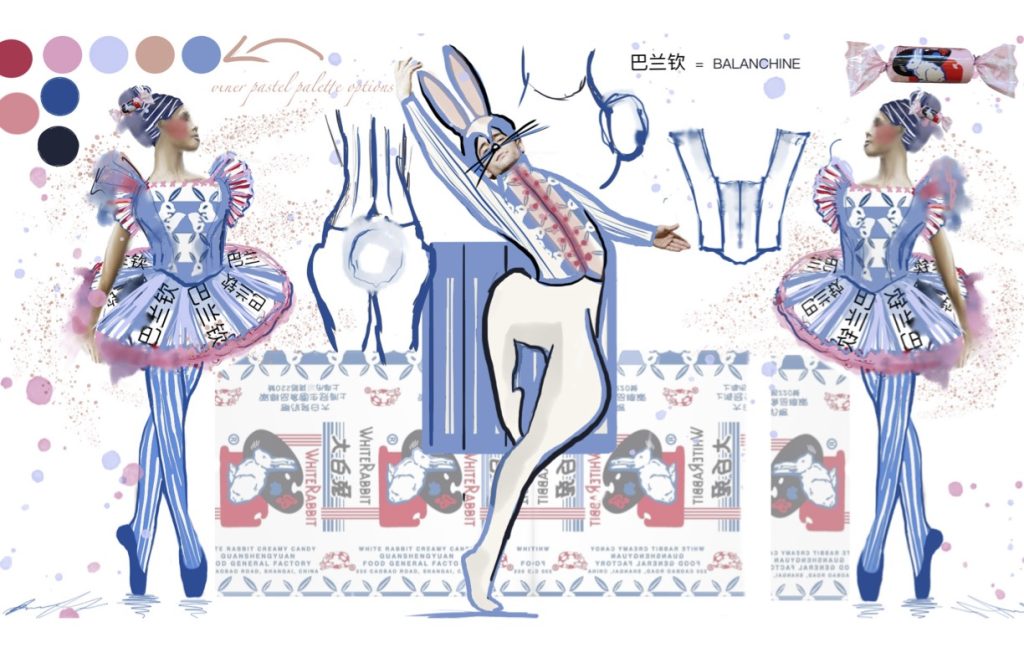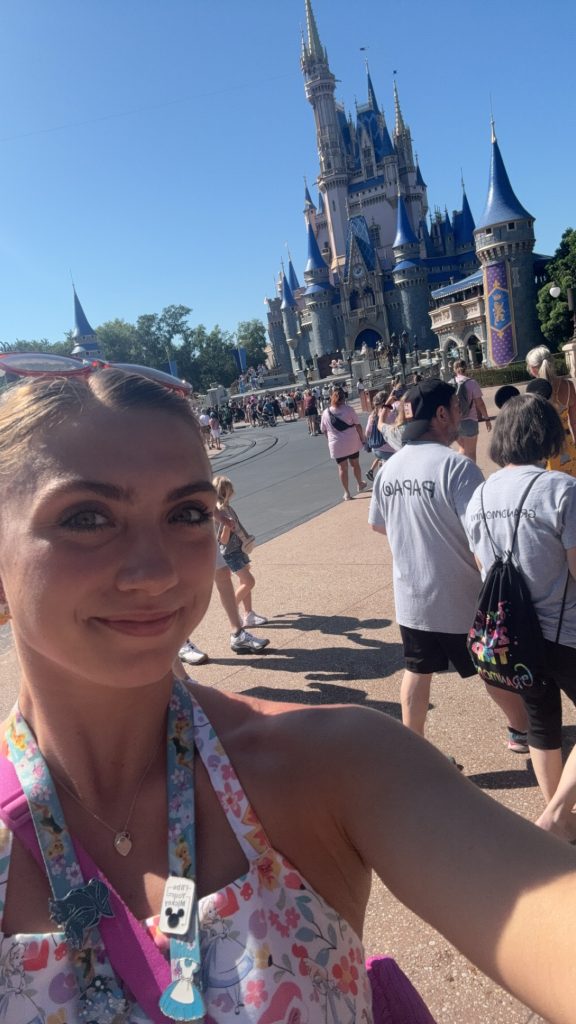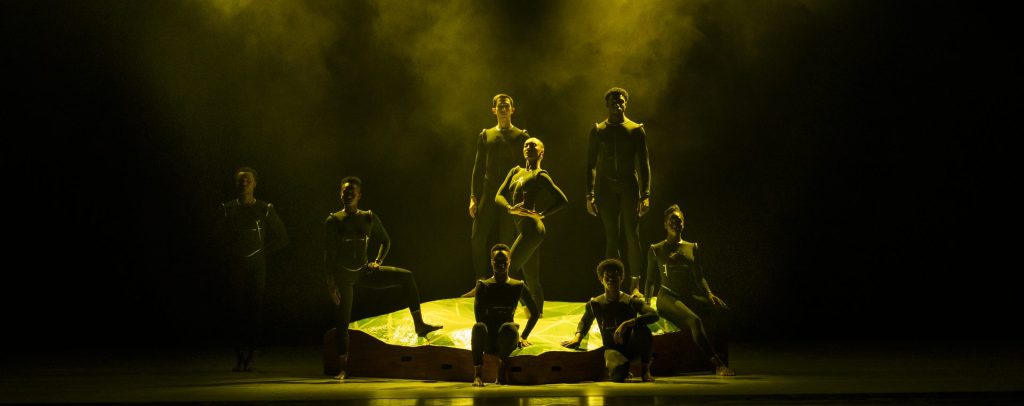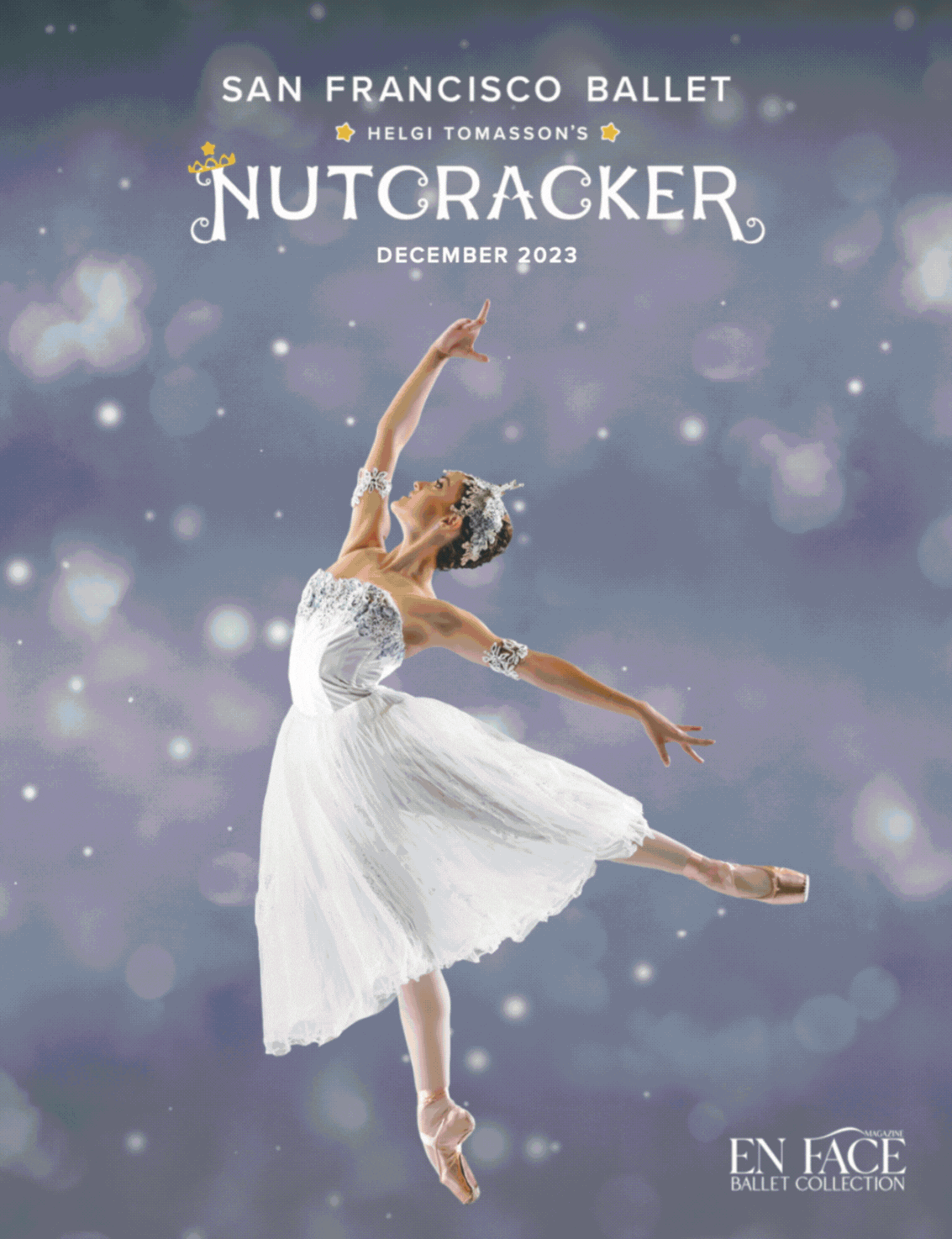Images courtesy of Pacific Northwest Ballet by Lindsay Thomas.
By Emma Love Suddarth
A waterfall of rain cascading down from high above the stage, only to be thrown back up in the air with each mesmerizing movement of the dancers’ feet. A line of rockstars commanding the front of the stage, so precisely in unison they almost move as one dancer, each change accented by a barely-audible inhale. A set of four boxes, moving as if by magic back and forth across the stage, stealing and revealing dancers from thin air. A looming, square abyss, hanging above the two pairs of dancers, seemingly ready to envelop them at any moment. Two dancers, two Velcro suits, two boxes of illuminated light bulbs.
We’ve seen his works. We’ve been moved by his works. While we, both audiences and dancers alike, have vivid images or fluid phrases from his works imprinted permanently on our minds, we wonder, where do these innovative ideas come from? Throughout each dance none of us quite know what will happen next-it makes a person wonder, does he?
One might not guess it, given the consistent presence of socks in his works, but Alejandro Cerrudo grew up training exclusively in classical ballet in Madrid. Later, as he moved through Europe-first at Stuttgart Ballet and then the second company at Netherlands Dance Theatre-his language and passion began to change to contemporary ones, ones that he modestly admits, “I am still learning.” His first choreographic venture started as nothing other than an attempt to make himself a better dancer: “If I put myself into the position of the choreographer, then I could learn how to become a better tool.” That piece, performed at Stuttgart Ballet’s Noverre, a long-standing program for young choreographers, was very well-received. While he enjoyed it, he readily admits it was “quite a struggle.” Eventually, he made his way to Hubbard Street Dance Chicago, where he found his home, first as dancer and then as resident choreographer, for 17 years. In 2006, he created his vastly celebrated work, Lickety-Split, for the company there, and from that point on, choreography exploded. Alejandro joined us here at PNB as Resident Choreographer in 2020, the company currently having performed seven of his works, with the newest one premiering right now.

Some choreographers start with music, some with a scenic component, some with a phrase of steps-his works masterfully utilize all these elements. Surprisingly though, Alejandro has no set formula for the beginning, besides the fact that “it starts as a bit of chaos.” Little mortal jump began as an experiment of playing with a few Styrofoam boxes, sans-wheels in the studio. It wasn’t until the thought crossed his mind that, “wouldn’t it be cool if you Velcroed someone to a wall?” that it began to resemble the piece we know and love today. One Thousand Pieces was created for the celebration of Hubbard Street’s 40th season, which happened to coincide with the 40th anniversary of the gift of artist Marc Chagall’s American Windows to the city of Chicago-thus the inspiration for the mirrors at the back of the stage. Elements, music, dancers, process aside, Alejandro strives to remain open, and allow the piece to define its own shape slowly: “The more I tell the dancer or myself what it’s going to be, the less room I leave for what might happen that is much better than what I planned for.” And that first piece he created? When asked where the idea for it came from, he laughed a little and admitted, “I saw these lamps in a restaurant… I liked them. I asked the owner and found out he made them himself. He made more for me.”
Having built a relationship with Seattle and PNB steadily over the last nine years, Alejandro now feels at home in these studios-the way he did with Hubbard Street for almost two decades. While he has yet to lock in favorites spots or activities around Seattle-“while I’m here it’s always work, work, work!”-we, as either the dancers in his piece or the audience in the theater, couldn’t be more grateful that it is. We are moved. We are mesmerized. “Something I strive for in my work is surprising the audience. I want to immerse the audience in a world that makes them forget what they did before they came to the theater -to disconnect from everything, only to be drawn to what they’re seeing on stage.” We are transported.










